from ESPN http://ift.tt/1dPqUAn
Final: Nationals 3 Giants 1. WP: WSH M Scherzer (6-3) LP: SF M Cain (3-4) (ESPN)
from ESPN http://ift.tt/1dPqUAn
Space Station's View of Florida at Night

Expedition 51 Flight Engineer Thomas Pesquet captured this nighttime photo of Florida from the International Space Station. Bright lights include the Miami-Fort Lauderdale area, and Orlando, with Cape Canaveral to the east, where launch preparations for SpaceX's next cargo mission are underway at NASA's Kennedy Space Center. via NASA http://ift.tt/2rkVCyQ
Space Station's EarthKAM Sees the Grand Canyon

On April 3, 2017, the student-controlled EarthKAM camera aboard the International Space Station captured this photograph of a favorite target -- the Grand Canyon -- from low Earth orbit. The camera has been aboard the orbiting outpost since the first space station expedition began in November 2000 and supports approximately four missions annually. via NASA http://ift.tt/2r7Hp9U
Beneath Jupiter
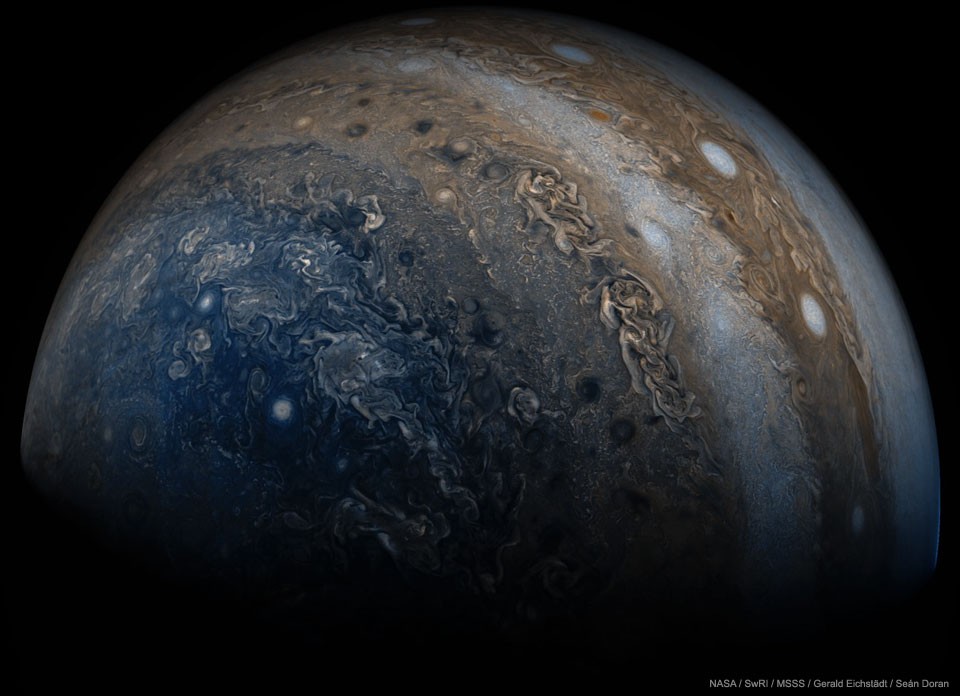
Jupiter is stranger than we knew. NASA's Juno spacecraft has now completed its sixth swoop past Jupiter as it moves around its highly elliptical orbit. Pictured, Jupiter is seen from below where, surprisingly, the horizontal bands that cover most of the planet disappear into swirls and complex patterns. A line of white oval clouds is visible nearer to the equator. Recent results from Juno show that Jupiter's weather phenomena can extend deep below its cloud tops, and that Jupiter's magnetic field varies greatly with location. Juno is scheduled to orbit Jupiter 37 times with each orbit taking about six weeks. via NASA http://ift.tt/2raF6n2
Final: Giants 7 Braves 1. WP: SF J Cueto (5-4) LP: ATL R Dickey (3-4) (ESPN)
from ESPN http://ift.tt/1dPqUAn
Collapse in Hebes Chasma on Mars
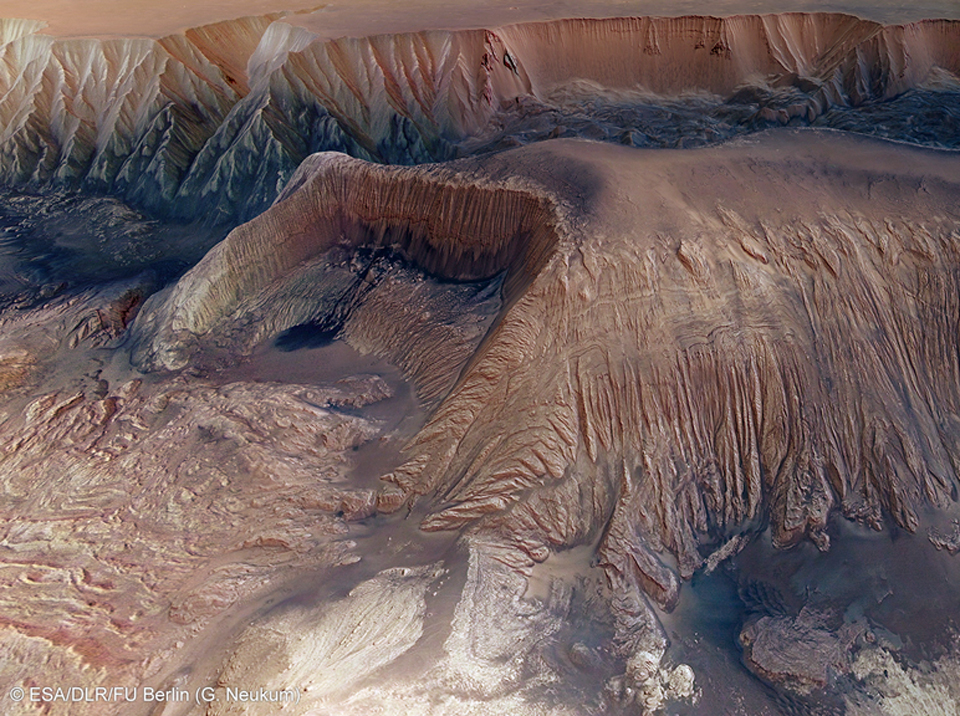
What's happened in Hebes Chasma on Mars? Hebes Chasma is a depression just north of the enormous Valles Marineris canyon. Since the depression is unconnected to other surface features, it is unclear where the internal material went. Inside Hebes Chasma is Hebes Mensa, a 5 kilometer high mesa that appears to have undergone an unusual partial collapse -- a collapse that might be providing clues. The featured image, taken by ESA's robotic Mars Express spacecraft currently orbiting Mars, shows great details of the chasm and the unusual horseshoe shaped indentation in the central mesa. Material from the mesa appears to have flowed onto the floor of the chasm, while a possible dark layer appears to have pooled like ink on a downslope landing. A recent hypothesis holds that salty rock composes some lower layers in Hebes Chasma, with the salt dissolving in melted ice flows that drained through holes into an underground aquifer. via NASA http://ift.tt/2qtRF97
Comet Clark is near the Edge.
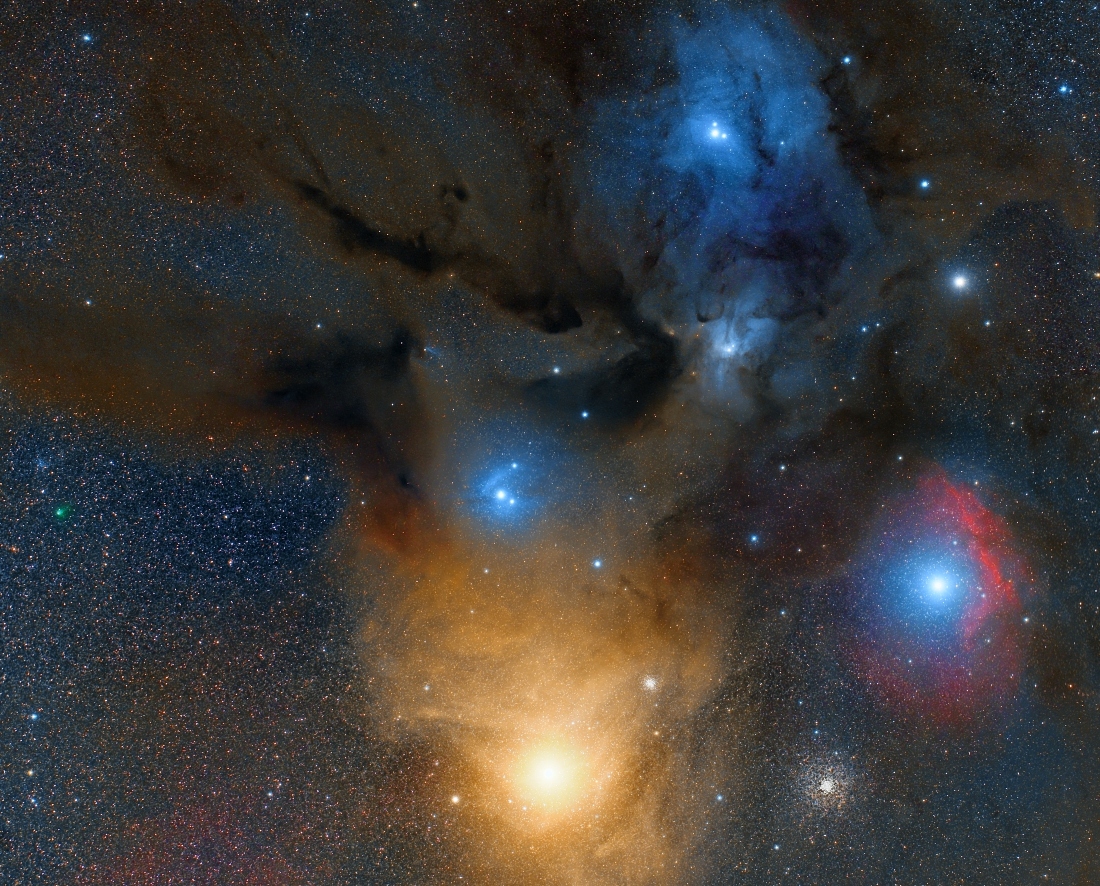
Sweeping through this stunning field of view, Comet 71P/Clark really is in the foreground of these cosmic clouds. The 2 panel telescopic mosaic is color enhanced and is about 5 degrees (10 full moons) across. It captures the faint comet's position on the night of May 23/24 over 5 light-minutes from Earth, very near the line-of-sight to bright star Antares and the Rho Ophiuchi cloud complex. In the frame Antares, also known as Alpha Scorpii, is at bottom center surrounded by a dusty cosmic cloud reflecting the cool giant star's yellowish light. Globular star cluster M4 shines just right of Antares, but M4 lies some 7,000 light-years away compared to Antares' 500 light-year distance. Slightly closer than Antares, Rho Ophiuchi's bluish starlight is reflected by the dust in molecular clouds toward the top. You can spot the small coma and short tail of the comet as a faint smudge near the center of the left edge of the frame. Just look for the comet's striking greenish color, produced as diatomic carbon molecules fluoresce in sunlight. via NASA http://ift.tt/2qlBhbD
Close-up View of Neutron Star Mission's X-Ray Concentrator Optics

A new NASA mission, the Neutron Star Interior Composition Explorer (NICER), is headed for the International Space Station to observe one of the strangest observable objects in the universe. In this photo, NICER’s X-ray concentrator optics are inspected for dust and foreign object debris that could impair functionality once in space. via NASA http://ift.tt/2qjUVZp
Spiral Galaxy NGC 6744
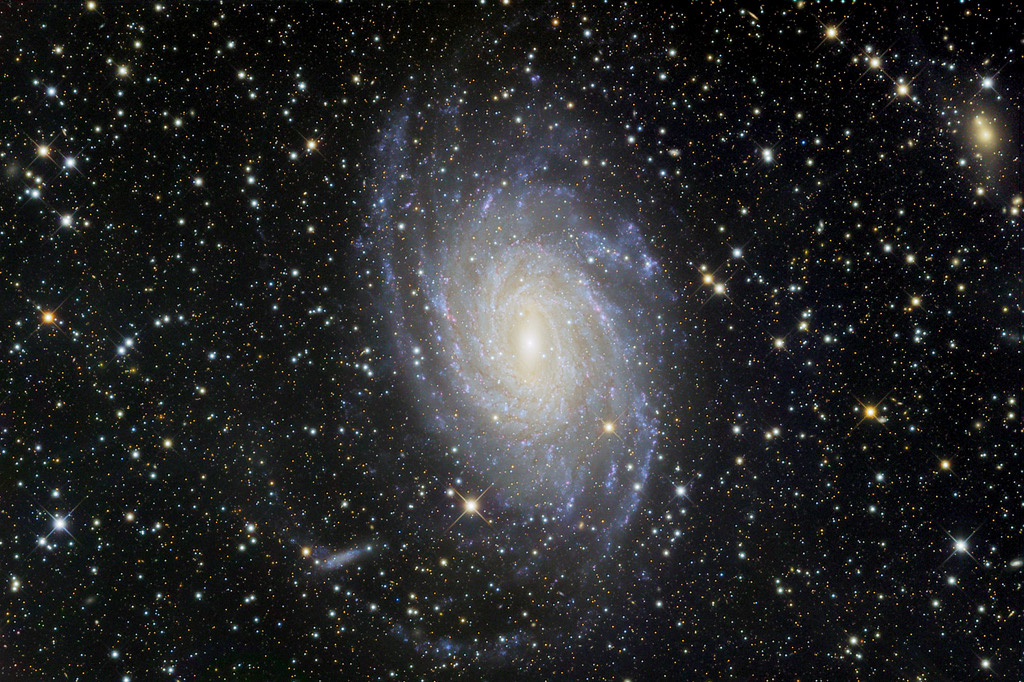
Big, beautiful spiral galaxy NGC 6744 is nearly 175,000 light-years across, larger than our own Milky Way. It lies some 30 million light-years distant in the southern constellation Pavo appearing as a faint, extended object in small telescopes. We see the disk of the nearby island universe tilted towards our line of sight. This remarkably distinct and detailed galaxy portrait covers an area about the angular size of the full moon. In it, the giant galaxy's yellowish core is dominated by the light from old, cool stars. Beyond the core, spiral arms filled with young blue star clusters and pinkish star forming regions sweep past a smaller satellite galaxy at the lower left, reminiscent of the Milky Way's satellite galaxy the Large Magellanic Cloud. via NASA http://ift.tt/2rYmkwq
Final: Cubs 5 Giants 1. WP: CHC E Butler (2-0) LP: SF J Samardzija (1-6) (ESPN)
from ESPN http://ift.tt/1dPqUAn
Sequence of Juno Spacecraft's Close Approach to Jupiter

This sequence of enhanced-color images shows how quickly the viewing geometry changes for NASA’s Juno spacecraft as it swoops by Jupiter. The images were obtained by JunoCam. via NASA http://ift.tt/2rVdhNy
Star Cluster, Spiral Galaxy, Supernova
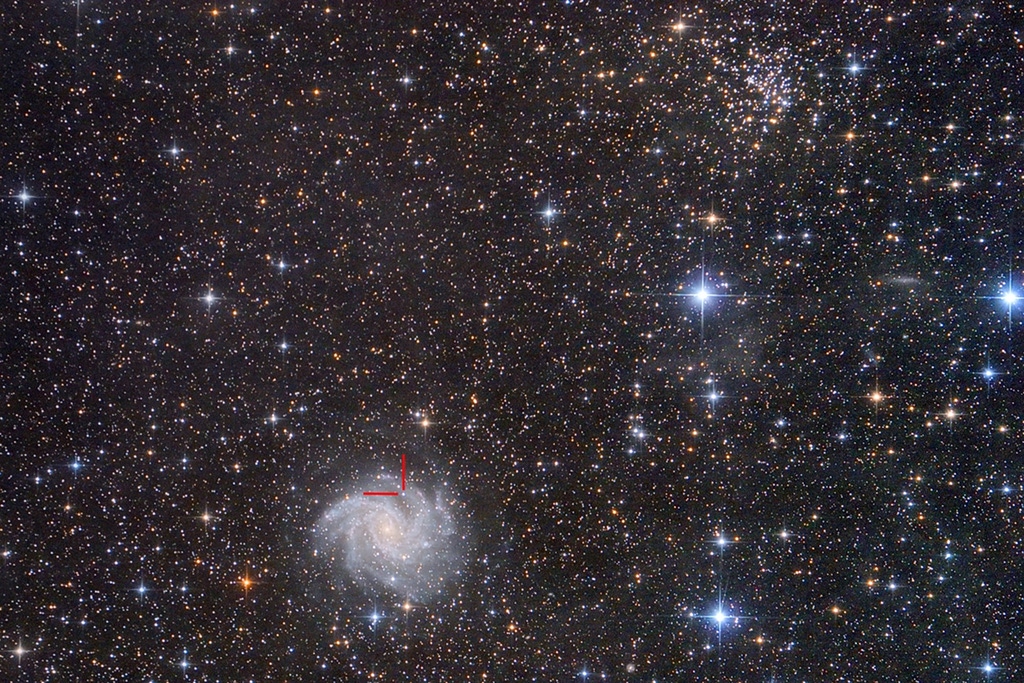
A cosmic snapshot from May 19, this colorful telescopic field of view spans about 1 degree or 2 full moons on the sky. Spiky in appearance, foreground Milky Way stars are scattered toward the royal constellation Cepheus while stars of open cluster NGC 6939 gather about 5 thousand light-years in the distance near the top of the frame. Face-on spiral galaxy NGC 6946 is toward the lower left nearly 22 million light-years away. The helpful red lines identify recently discovered supernova SN 2017eaw, the death explosion of a massive star nestled in the galaxy's bluish spiral arms. In fact in the last 100 years, 10 supernovae have been discovered in NGC 6946. By comparison, the average rate of supernovae in our Milky Way is about 1 every 100 years or so. Of course, NGC 6946 is also known as The Fireworks Galaxy. via NASA http://ift.tt/2qjJIDn
Final: Cubs 5 Giants 4. WP: CHC K Hendricks (4-2) LP: SF M Moore (2-5) (ESPN)
from ESPN http://ift.tt/1dPqUAn
May 24, 1962 - Scott Carpenter on the Way to Mercury-Atlas 7 Launch Site

Astronaut Scott Carpenter walks to the launch site to begin the Mercury-Atlas 7 (MA-7) mission on May 24, 1962. Carpenter's Aurora 7 capsule lifted off aboard an Atlas rocket from Cape Canaveral, Florida, at 7:45 a.m. EST, May 24. Carpenter was the fourth American in space and second American to orbit Earth. via NASA http://ift.tt/2qQ7tq9
NGC 4565: Galaxy on Edge
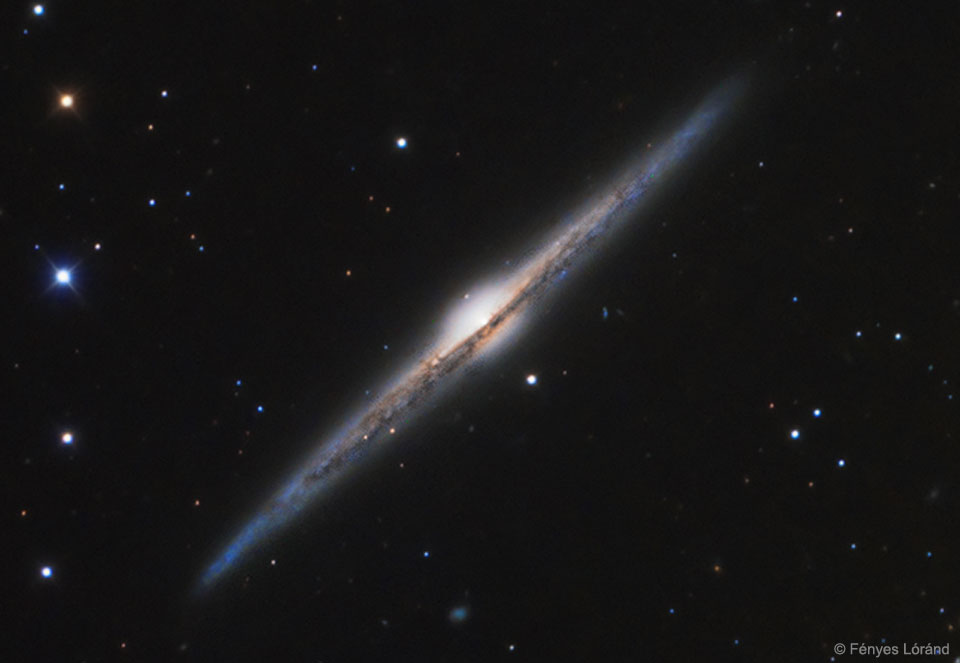
Is our Galaxy this thin? We believe so. Magnificent spiral galaxy NGC 4565 is viewed edge-on from planet Earth. Also known as the Needle Galaxy for its narrow profile, bright NGC 4565 is a stop on many telescopic tours of the northern sky, in the faint but well-groomed constellation Coma Berenices. This sharp, colorful image reveals the galaxy's bulging central core cut by obscuring dust lanes that lace NGC 4565's thin galactic plane. An assortment of other background galaxies is included in the pretty field of view, with neighboring galaxy NGC 4562 at the upper left. NGC 4565 itself lies about 40 million light-years distant and spans some 100,000 light-years. Easily spotted with small telescopes, sky enthusiasts consider NGC 4565 to be a prominent celestial masterpiece Messier missed. via NASA http://ift.tt/2qS4ZWw
Final: Cubs 4 Giants 1. WP: CHC J Lester (3-2) LP: SF J Cueto (4-4) (ESPN)
from ESPN http://ift.tt/1dPqUAn
NASA’s Mars 2020 Rover Artist’s Concept

This illustration depicts NASA's Mars 2020 rover on the surface of Mars. The mission, targeted for launch in July/August 2020, takes the next step by not only seeking signs of habitable conditions on Mars in the ancient past, but also searching for signs of past microbial life itself. via NASA http://ift.tt/2q7Qktb
Slim Crescent of Ice

The low angle of sunlight along the slim crescent of Saturn's moon Enceladus. via NASA http://ift.tt/2rL511T
A Zodiacal Sky over Horseshoe Bend
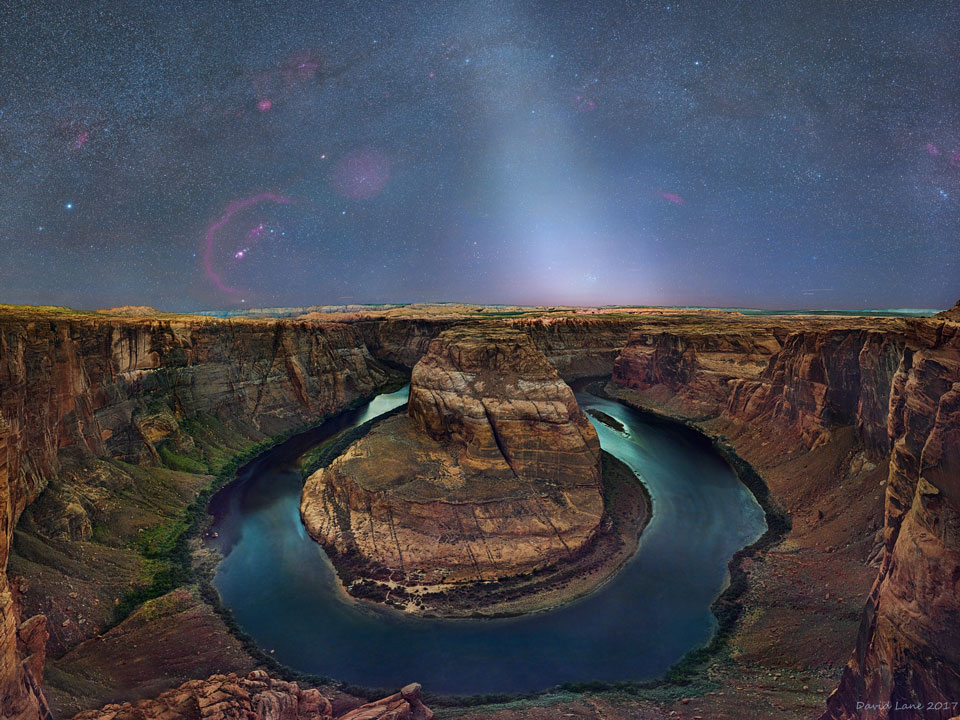
What's causing the unusual ray of white light extending upward from the central horizon? Dust orbiting the Sun. At certain times of the year, a band of sun-reflecting dust from the inner Solar System rises prominently before sunrise and is called zodiacal light. The dust originates mostly from faint Jupiter-family comets and slowly spirals into the Sun. Pictured, in front of the zodiacal light, is a spectacular view of Horseshoe Bend of the Colorado River. Emitted from well behind the zodiacal light is a spectacular sky that includes many bright stars including Sirius, several blue star clusters including the Pleiades, and an assortment of red nebula including Barnard's Loop in Orion. The 30-image composite was taken earlier this month in nearly complete darkness only six inches from the edge of a dangerous cliff. via NASA http://ift.tt/2qEbjmb
Final: Cardinals 8 Giants 3. WP: STL A Wainwright (4-3) LP: SF M Cain (3-2) (ESPN)
from ESPN http://ift.tt/1dPqUAn
In the Center of the Lagoon Nebula
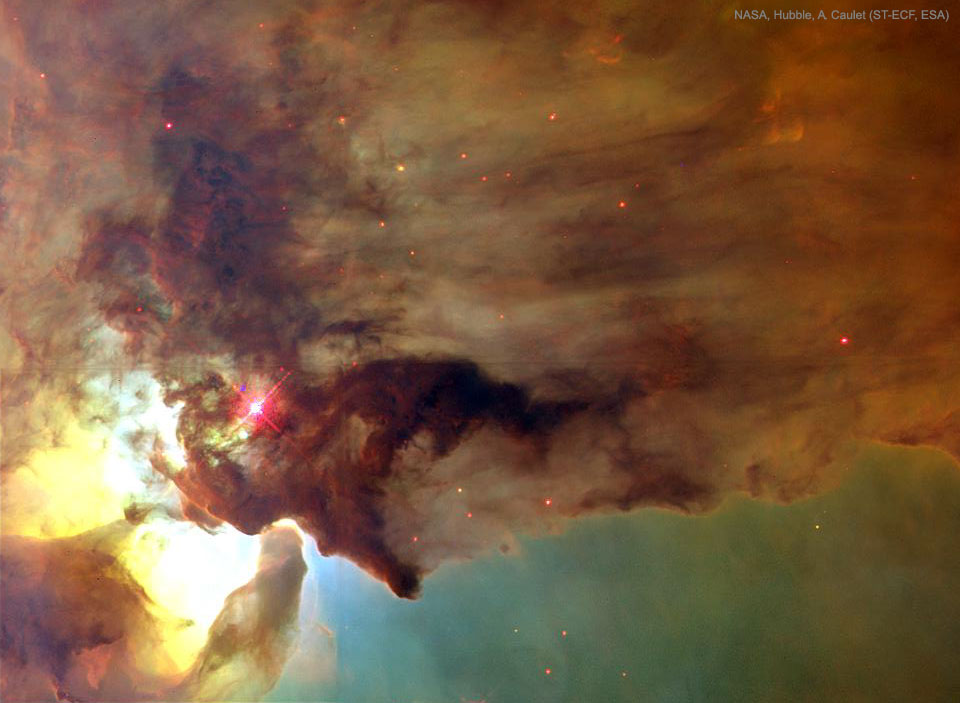
The center of the Lagoon Nebula is a whirlwind of spectacular star formation. Visible on the lower left, at least two long funnel-shaped clouds, each roughly half a light-year long, have been formed by extreme stellar winds and intense energetic starlight. The tremendously bright nearby star, Hershel 36, lights the area. Vast walls of dust hide and redden other hot young stars. As energy from these stars pours into the cool dust and gas, large temperature differences in adjoining regions can be created generating shearing winds which may cause the funnels. This picture, spanning about 5 light years, was taken in 1995 by the orbiting Hubble Space Telescope. The Lagoon Nebula, also known as M8, lies about 5000 light years distant toward the constellation of Sagittarius. via NASA http://ift.tt/2q2XieY
A View Toward M101
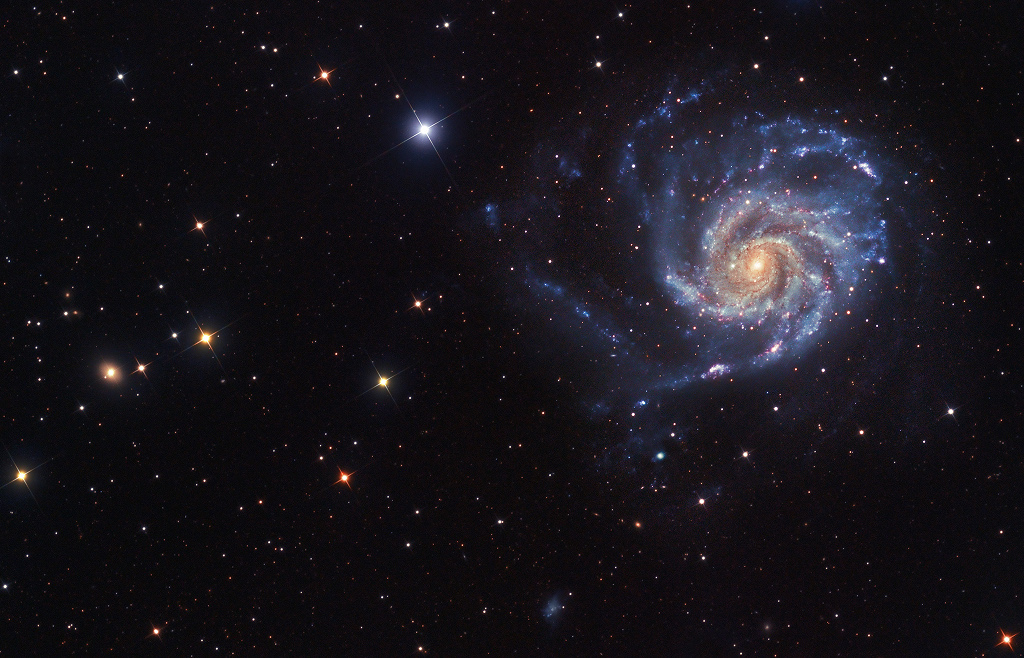
Big, beautiful spiral galaxy M101 is one of the last entries in Charles Messier's famous catalog, but definitely not one of the least. About 170,000 light-years across, this galaxy is enormous, almost twice the size of our own Milky Way galaxy. M101 was also one of the original spiral nebulae observed by Lord Rosse's large 19th century telescope, the Leviathan of Parsontown. M101 shares this modern telescopic field of view with spiky foreground stars within the Milky Way, and more distant background galaxies. The colors of the Milky Way stars can also be found in the starlight from the large island universe. Its core is dominated by light from cool yellowish stars. Along its grand spiral arms are the blue colors of hotter, young stars mixed with obscuring dust lanes and pinkish star forming regions. Also known as the Pinwheel Galaxy, M101 lies within the boundaries of the northern constellation Ursa Major, about 25 million light-years away. via NASA http://ift.tt/2q2xsqy
CubeSats Deployed Outside Station's Kibo Lab Module

A pair of CubeSats, with the Earth's limb in the background, moments after being ejected from a small satellite deployer outside of the International Space Station's Kibo laboratory module on Wednesday, May 16, 2017. Over a dozen CubeSats were ejected into Earth orbit this week to study Earth and space phenomena for the next one to two years. via NASA http://ift.tt/2qBi60p
Wolf Lundmark Melotte
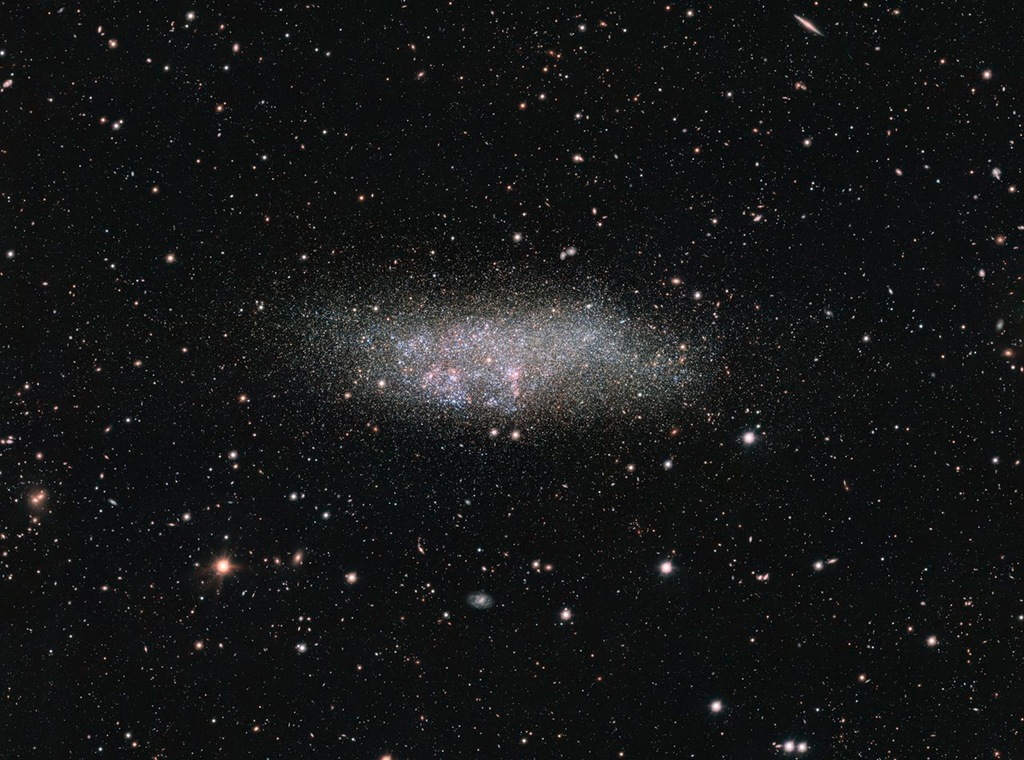
Named for the three astronomers instrumental in its discovery and identification, Wolf - Lundmark - Melotte (WLM) is a lonely dwarf galaxy. Seen toward the mostly southern constellation Cetus, about 3 million light-years from the Milky Way, it is one of the most remote members of our local galaxy group. In fact, it may never have interacted with any other local group galaxy. Still, telltale pinkish star forming regions and hot, young, bluish stars speckle the isolated island universe. Older, cool yellowish stars fade into the small galaxy's halo, extending about 8,000 light-years across. This sharp portrait of WLM was captured by the 268-megapixel OmegaCAM widefield imager and survey telescope at ESO's Paranal Observatory. via NASA http://ift.tt/2qUdrHO
May 18, 1969 - Apollo 10 View of the Earth

A view of Earth from 36,000 nautical miles away as photographed from the Apollo 10 spacecraft during its trans-lunar journey toward the moon. While the Yucatan Peninsula is obscured by clouds, nearly all of Mexico north of the Isthmus of Tehuantepec can be clearly delineated. via NASA http://ift.tt/2rv852x
Final: Dodgers 6 Giants 1. WP: LAD C Kershaw (7-2) LP: SF J Cueto (4-3) (ESPN)
from ESPN http://ift.tt/1dPqUAn
NASA's IceBridge Wraps Up 2017 Arctic Campaign With Southern Greenland Flight

A fjord in southern Greenland, as seen during Operation IceBridge's last flight of the 2017 Arctic campaign, on May 12, 2017. This final full science flight, ICESat-2 South, was designed along the ground tracks of NASA’s upcoming ICESat-2, to fill in a gap in altimetry coverage of central southern Greenland. via NASA http://ift.tt/2qRUipN
Galaxy Group Hickson 90
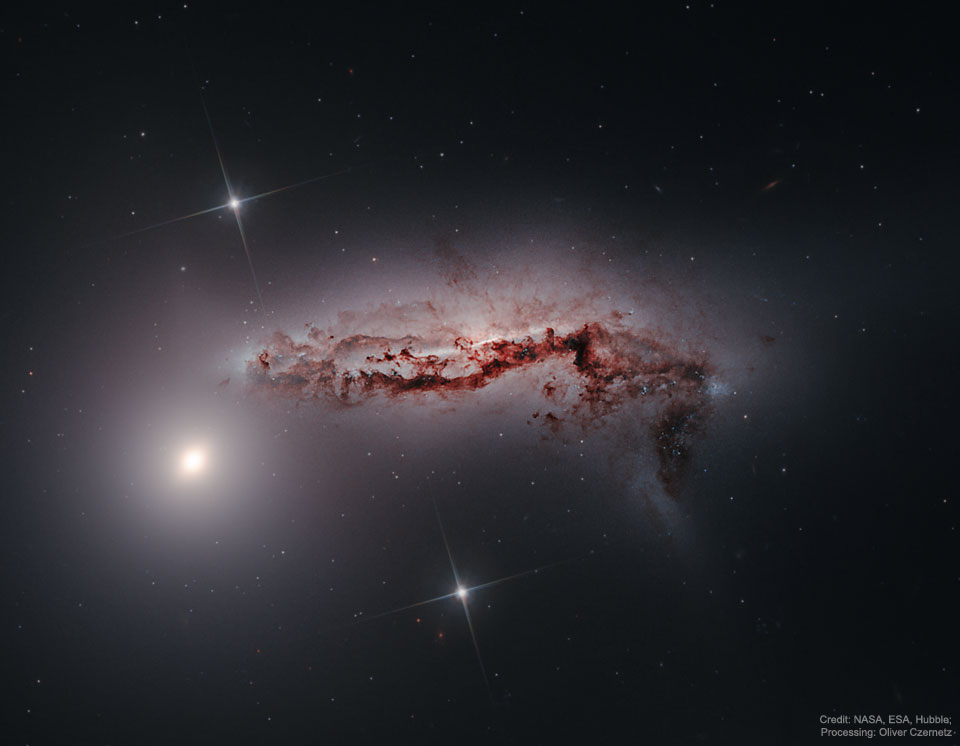
Scanning the skies for galaxies, Canadian astronomer Paul Hickson and colleagues identified some 100 compact groups of galaxies, now appropriately called Hickson Compact Groups (HCGs). This sharp Hubble image shows one such galaxy group, HCG 90, in startling detail. Three galaxies -- two visible here -- are revealed to be strongly interacting: a dusty spiral galaxy stretched and distorted in the image center, and two large elliptical galaxies. The close encounter will trigger furious star formation. On a cosmic timescale, the gravitational tug of war will eventually result in the merger of the trio into a large single galaxy. The merger process is now understood to be a normal part of the evolution of galaxies, including our own Milky Way. HCG 90 lies about 100 million light-years away toward the constellation of the Southern Fish (Piscis Austrinus). This Hubble view spans about 40,000 light-years at that estimated distance. Of course, Hickson Compact Groups also make for rewarding viewing for Earth-bound astronomers with more modest sized telescopes. via NASA http://ift.tt/2rktieV
Giants: P Mark Melancon (elbow) expected to be activated from DL on Friday (ESPN)
from ESPN http://ift.tt/1dPqUAn
James Webb Space Telescope Primary Mirror Prepared for Testing at Johnson Space Center

The towering primary mirror of NASA’s James Webb Space Telescope stands inside a cleanroom at NASA’s Johnson Space Center in Houston, where it will undergo its last cryogenic test before it is launched into space in 2018. In preparation for testing, the “wings” of the mirror (which consist of the three segments on each side) were spread open. via NASA http://ift.tt/2qNH25o
Final: Giants 8 Dodgers 4. WP: SF M Cain (3-1) LP: LAD B McCarthy (3-1) (ESPN)
from ESPN http://ift.tt/1dPqUAn
Gemini Stars Pollux and Castor
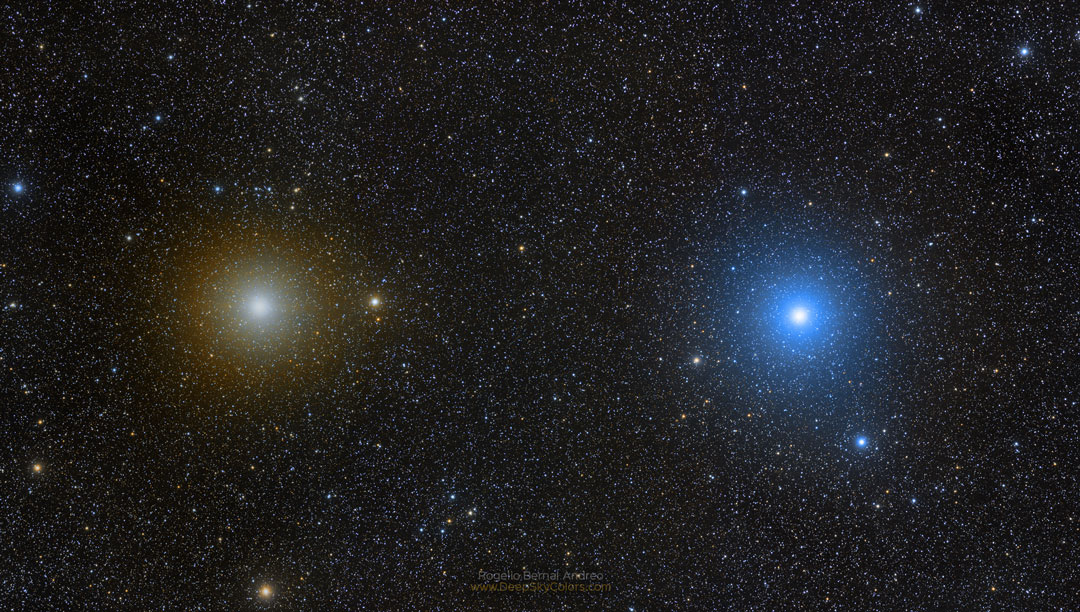
Who are the twins of Gemini? It terms of astronomical objects, the famous constellation is dominated by two bright stars: Pollux (left) and Castor (right). Pictured, the two stars stand out because they are so bright, so close together both in angle and brightness, but so different in color. Pollux, at 33 light years distant, is an evolved red giant star twice as massive as our Sun. Castor, at 51 light years distant, is a blue main sequence star about 2.7 times more massive that our Sun. Castor is known to have at least two stellar companions, while Pollux is now known to be circled by at least one massive planet. In terms of ancient Babylonian, Greek, and Roman mythology, Castor and Pollux represent twin brothers. Currently, the Earth's orbit is causing the Sun to appear to shift in front of the constellation of Gemini, with the result that, for much of humanity, Castor and Pollux will remain visible toward the west at sunset for only a few more weeks. via NASA http://ift.tt/2pPdkck
Short Shadow

The projection of Saturn's shadow on the rings grows shorter as Saturn’s season advances toward northern summer. via NASA http://ift.tt/2r8XD3z
Final: Giants 8 Reds 3. WP: SF J Samardzija (1-5) LP: CIN T Adleman (2-2) (ESPN)
from ESPN http://ift.tt/1dPqUAn
Rocket Blasts Off During 2017 Student Launch Challenge

Nearly 50 student teams from middle and high schools, colleges and universities in 22 states demonstrated advanced rocketry and engineering skills in NASA's 2017 Student Launch challenge. Teams spent eight months building and testing rockets designed to fly to an altitude of one mile, deploy an automated parachute system, and safely land for reuse. via NASA http://ift.tt/2pGdcek
M13: The Great Globular Cluster in Hercules
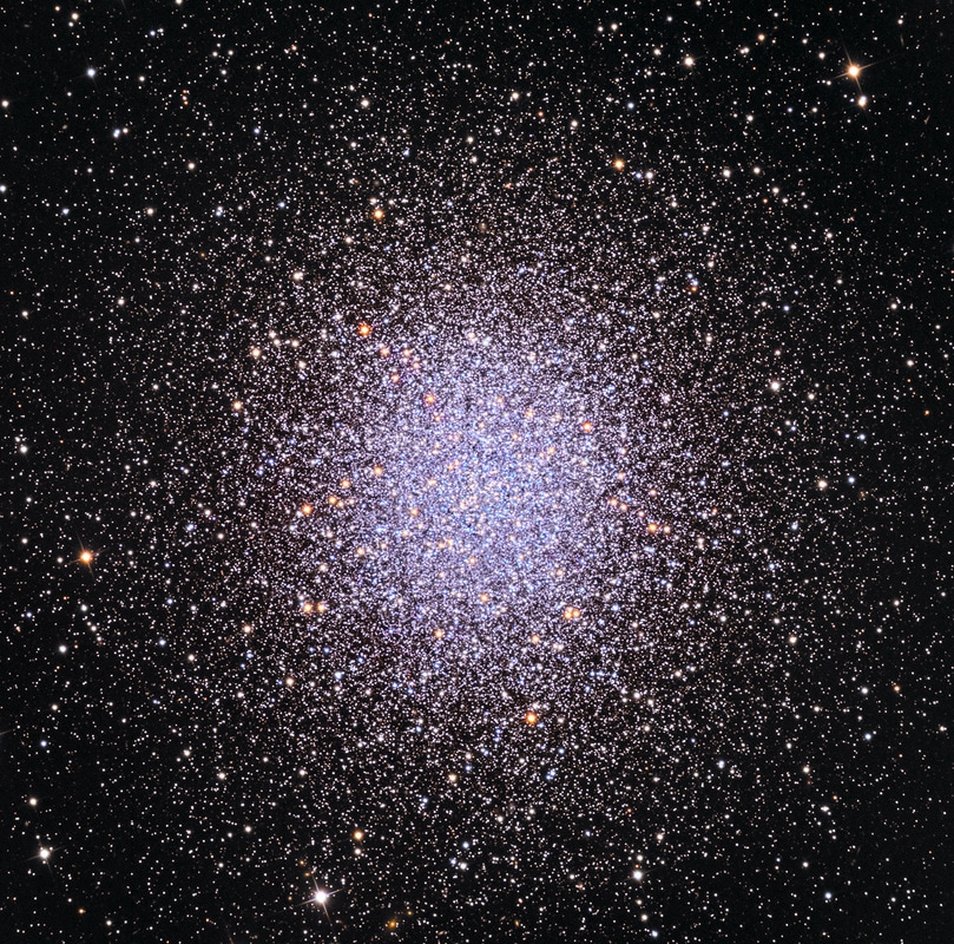
In 1716, English astronomer Edmond Halley noted, "This is but a little Patch, but it shews itself to the naked Eye, when the Sky is serene and the Moon absent." Of course, M13 is now less modestly recognized as the Great Globular Cluster in Hercules, one of the brightest globular star clusters in the northern sky. Telescopic views reveal the spectacular cluster's hundreds of thousands of stars. At a distance of 25,000 light-years, the cluster stars crowd into a region 150 light-years in diameter. Approaching the cluster core upwards of 100 stars could be contained in a cube just 3 light-years on a side. For comparison, the closest star to the Sun is over 4 light-years away. Along with the cluster's dense core, the outer reaches of M13 are highlighted in this sharp color image. The cluster's evolved red and blue giant stars show up in yellowish and blue tints. via NASA http://ift.tt/2qVE9iG
NASA Astronaut Jack Fischer Prepares for Friday Spacewalk

Expedition 51 Flight Engineer Jack Fischer of NASA is seen inside the International Space Station in his spacesuit during a fit check, in preparation for a spacewalk on Friday, May 12, 2017. This will be the 200th spacewalk at the station for assembly and maintenance, the ninth spacewalk for NASA astronaut Peggy Whitson and the first for Fischer. via NASA http://ift.tt/2qwu8ZK
The Multiwavelength Crab
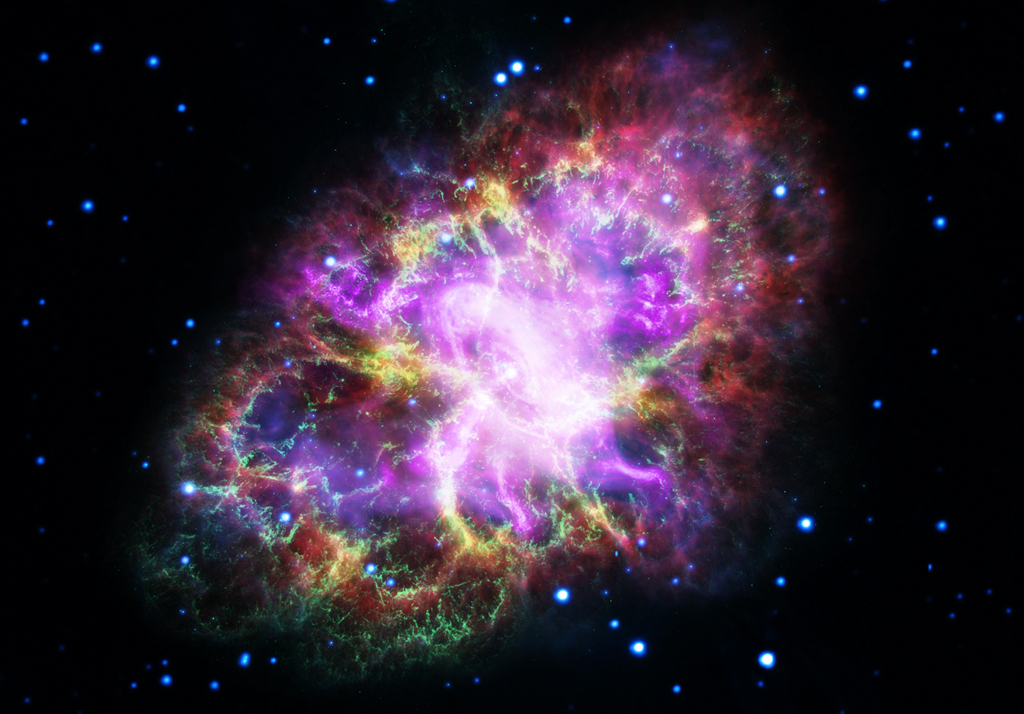
The Crab Nebula is cataloged as M1, the first object on Charles Messier's famous list of things which are not comets. In fact, the Crab is now known to be a supernova remnant, expanding debris from massive star's death explosion, witnessed on planet Earth in 1054 AD. This brave new image offers a 21st century view of the Crab Nebula by presenting image data from across the electromagnetic spectrum as wavelengths of visible light. From space, Chandra (X-ray) XMM-Newton (ultraviolet), Hubble (visible), and Spitzer (infrared), data are in purple, blue, green, and yellow hues. From the ground, Very Large Array radio wavelength data is in shown in red. One of the most exotic objects known to modern astronomers, the Crab Pulsar, a neutron star spinning 30 times a second, is the bright spot near picture center. Like a cosmic dynamo, this collapsed remnant of the stellar core powers the Crab's emission across the electromagnetic spectrum. Spanning about 12 light-years, the Crab Nebula is 6,500 light-years away in the constellation Taurus. via NASA http://ift.tt/2r0edjf
New View of the Crab Nebula

This composite image of the Crab Nebula, a supernova remnant, was assembled by combining data from five telescopes spanning nearly the entire breadth of the electromagnetic spectrum: the Karl G. Jansky Very Large Array, the Spitzer Space Telescope, the Hubble Space Telescope, the XMM-Newton Observatory, and the Chandra X-ray Observatory. via NASA http://ift.tt/2q3p0uT
UGC 1810: Wildly Interacting Galaxy from Hubble
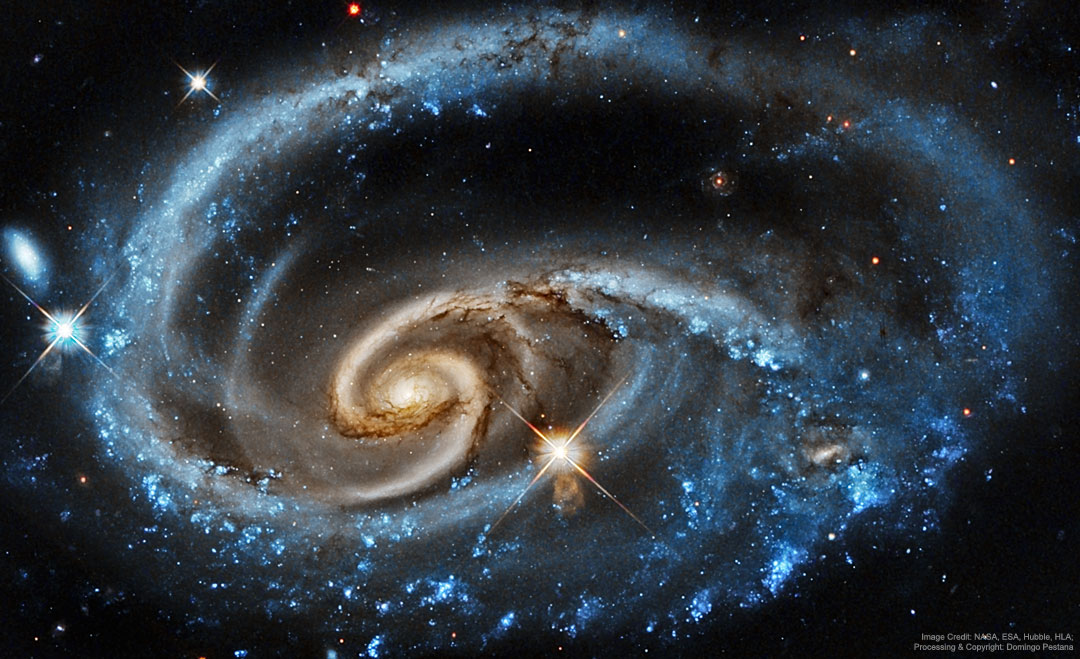
What's happening to this spiral galaxy? Although details remain uncertain, it surely has to do with an ongoing battle with its smaller galactic neighbor. The featured galaxy is labelled UGC 1810 by itself, but together with its collisional partner is known as Arp 273. The overall shape of the UGC 1810 -- in particular its blue outer ring -- is likely a result of wild and violent gravitational interactions. This ring's blue color is caused by massive stars that are blue hot and have formed only in the past few million years. The inner galaxy appears older, redder, and threaded with cool filamentary dust. A few bright stars appear well in the foreground, unrelated to UGC 1810, while several galaxies are visible well in the background. Arp 273 lies about 300 million light years away toward the constellation of Andromeda. Quite likely, UGC 1810 will devour its galactic sidekick over the next billion years and settle into a classic spiral form. via NASA http://ift.tt/2qUAJZT
Final: Mets 6 Giants 1. WP: NYM Z Wheeler (2-2) LP: SF J Samardzija (0-5) (ESPN)
from ESPN http://ift.tt/1dPqUAn
Giants place closer Mark Melancon on 10-day DL with mild forearm strain (ESPN)
from ESPN http://ift.tt/1dPqUAn
NASA's P-3 Aircraft Flies Over Southeast Greenland

The shadow of NASA's P-3 aircraft is seen over an iceberg on a May 8, 2017 flight supporting NASA's Operation IceBridge mission. IceBridge began its final week of Arctic Spring 2017 surveys with a glacier-packed mission in Greenland, called Southeast Glaciers 01. via NASA http://ift.tt/2pgWHtL
Big Dipper Above and Below Chilean Volcanoes
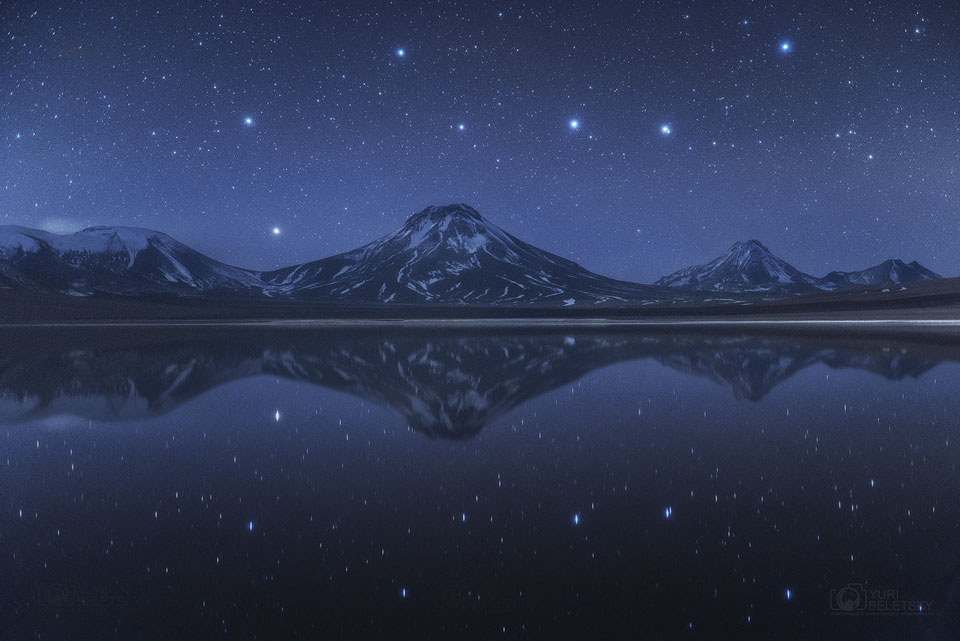
Do you see it? This common question frequently precedes the rediscovery of one of the most commonly recognized configurations of stars on the northern sky: the Big Dipper. This grouping of stars is one of the few things that has likely been seen, and will be seen, by every generation. The Big Dipper is not by itself a constellation. Although part of the constellation of the Great Bear (Ursa Major), the Big Dipper is an asterism that has been known by different names to different societies. Five of the Big Dipper stars are actually near each other in space and were likely formed at nearly the same time. Connecting two stars in the far part of the Big Dipper will lead one to Polaris, the North Star, which is part of the Little Dipper. Relative stellar motions will cause the Big Dipper to slowly change its configuration over the next 100,000 years. Pictured in late April, the Big Dipper was actually imaged twice -- above and below distant Chilean volcanoes, the later reflected from an unusually calm lagoon. via NASA http://ift.tt/2qhjSEe
Final: Mets 4 Giants 3. WP: NYM J Familia (1-0) LP: SF J Osich (0-1) (ESPN)
from ESPN http://ift.tt/1dPqUAn
Hail the Hexagon

Saturn's hexagonal polar jet stream is the shining feature of almost every view of the north polar region of Saturn. via NASA http://ift.tt/2prpfwB
Ancient Ogunquit Beach on Mars
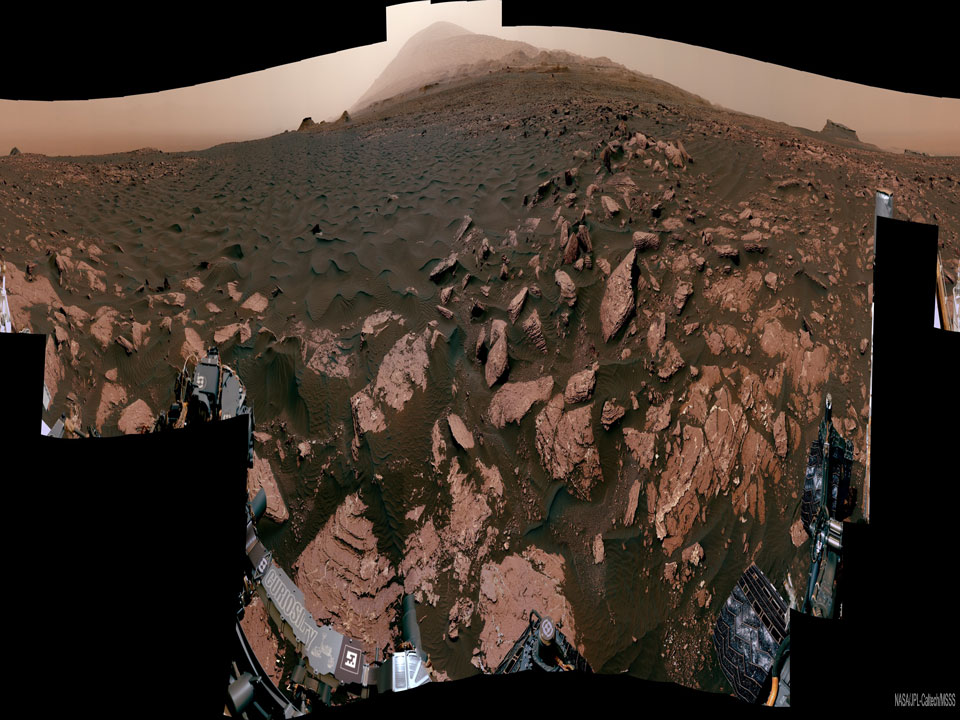
This was once a beach -- on ancient Mars. The featured 360-degree panorama, horizontally compressed, was taken by the robotic Curiosity rover currently exploring the red planet. Named Ogunquit Beach after its terrestrial counterpart, evidence shows that at times long ago the area was underwater, while at other times it was at the edge of an ancient lake. The light peak in the central background is the top of Mount Sharp, the central feature in Gale Crater where Curiosity has been deployed. Curiosity is slowly ascending Mount Sharp. Portions of the dark sands in the foreground have been scooped up for analysis. The light colored bedrock is composed of sediment that likely settled at the bottom of the now-dried lakebed. The featured panorama (interactive version here) was created from over 100 images acquired in late March and seemingly signed by the rover on the lower left. Currently, Curiosity is carefully crossing deep megaripples of dark sands on its way to explore Vera Rubin Ridge. via NASA http://ift.tt/2qNTnmV
Final: Reds 4 Giants 0. WP: CIN S Feldman (2-3) LP: SF J Cueto (4-2) (ESPN)
from ESPN http://ift.tt/1dPqUAn
Star Formation in the Tadpole Nebula
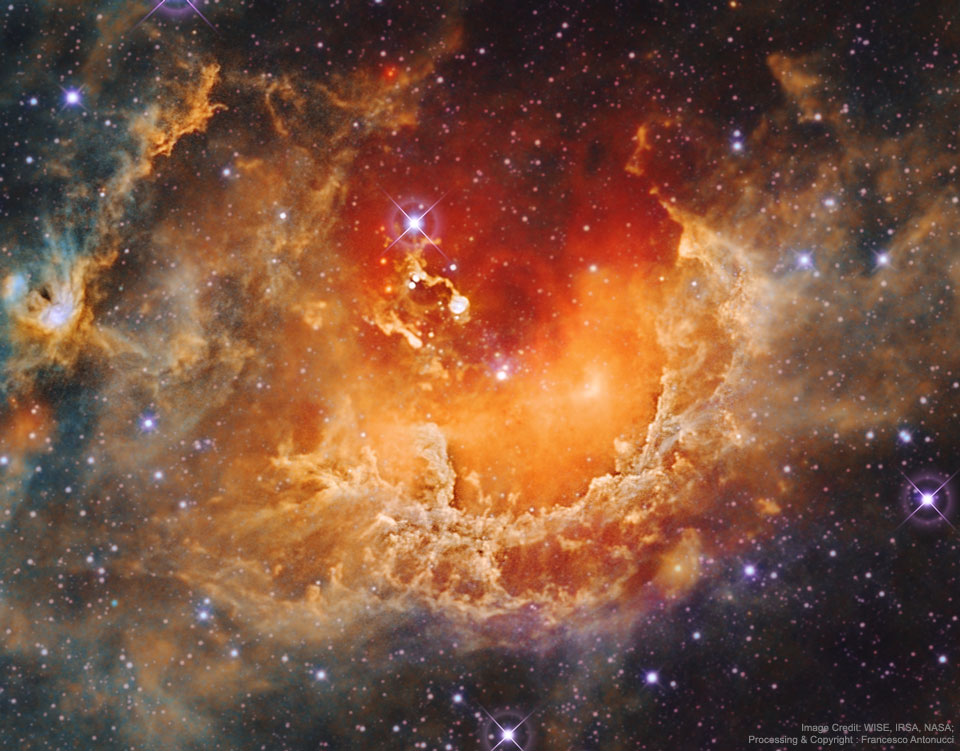
What's all of the commotion in the Tadpole nebula? Star formation. Dusty emission in the Tadpole nebula, IC 410, lies about 12,000 light-years away in the northern constellation of the Charioteer (Auriga). The cloud of glowing gas is over 100 light-years across, sculpted by stellar winds and radiation from embedded open star cluster NGC 1893. Formed in the interstellar cloud a mere 4 million years ago, bright newly formed cluster stars are seen all around the star-forming nebula. Notable near the image center are two relatively dense streamers of material trailing away from the nebula's central regions. Potentially sites of ongoing star formation in IC 410, these cosmic tadpole shapes are about 10 light-years long. The featured image was taken in infrared light by NASA's Wide Field Infrared Survey Explorer (WISE) satellite. via NASA http://ift.tt/2pQgmzQ
Final: Reds 13 Giants 3. WP: CIN B Arroyo (3-2) LP: SF M Cain (2-1) (ESPN)
from ESPN http://ift.tt/1dPqUAn
Panorama with Active Linear Dune in Gale Crater, Mars

This 360-degree mosaic from the Mast Camera (Mastcam) on NASA's Curiosity Mars rover looks out over a portion of the Bagnold Dunes, which stretch for several miles. via NASA http://ift.tt/2p4yfvJ
Illustration of an Earth-Sized 'Tatooine' Planet

This illustration shows a hypothetical planet covered in water around the binary star system of Kepler-35A and B. With two suns in its sky, Luke Skywalker's home planet Tatooine in "Star Wars" looks like a parched, sandy desert world. In real life, we know that two-star systems can indeed support planets. via NASA http://ift.tt/2p9yXmD
North Pole of Enceladus

In the north, Enceladus' surface appears to be about as old as any in the solar system. The south, however, is an entirely different story. via NASA http://ift.tt/2p5HPcO
Final: Dodgers 13 Giants 5. WP: LAD A Wood (2-0) LP: SF M Moore (1-4) (ESPN)
from ESPN http://ift.tt/1dPqUAn
NGC 3628: The Hamburger Galaxy
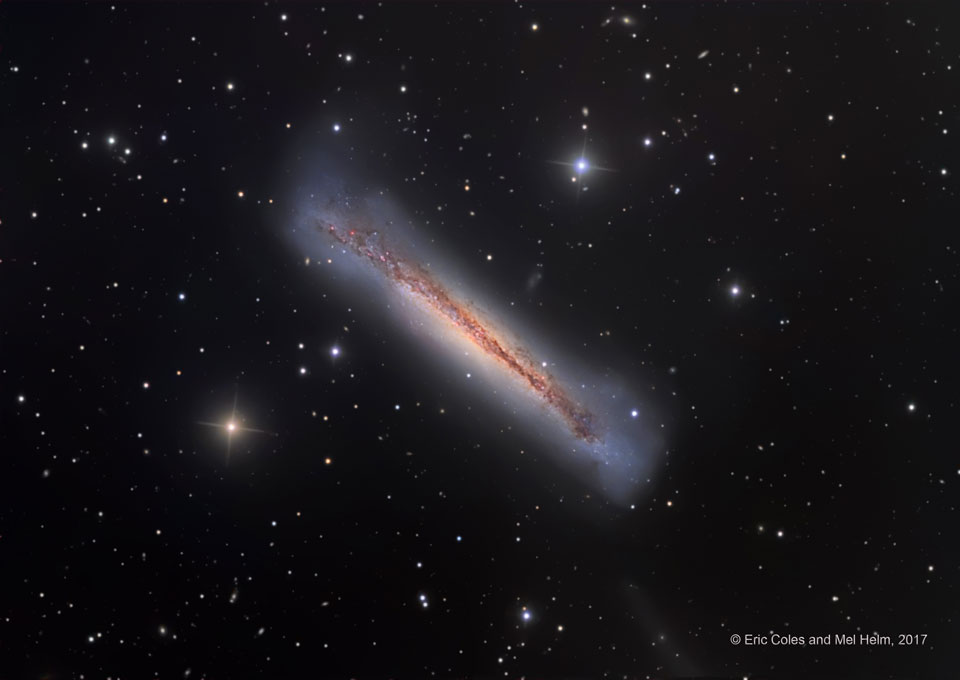
No, hamburgers are not this big. What is pictured is a sharp telescopic views of a magnificent edge-on spiral galaxy NGC 3628 show a puffy galactic disk divided by dark dust lanes. Of course, this deep galactic portrait puts some astronomers in mind of its popular moniker, The Hamburger Galaxy. The tantalizing island universe is about 100,000 light-years across and 35 million light-years away in the northern springtime constellation Leo. NGC 3628 shares its neighborhood in the local Universe with two other large spirals M65 and M66 in a grouping otherwise known as the Leo Triplet. Gravitational interactions with its cosmic neighbors are likely responsible for the extended flare and warp of this spiral's disk. via NASA http://ift.tt/2pRH0ck
NASA Marks Progress on Hardware for Orion's Second Flight with Space Launch System Rocket

Machining for NASA's Orion spacecraft, scheduled to fly on the second integrated flight with agency's Space Launch System rocket, is well underway at Ingersoll Machine Tools in Rockford, Illinois. The new deep space spacecraft will take humans farther into the solar system than we have ever traveled before. via NASA http://ift.tt/2qANEQE
Approach above Sunset
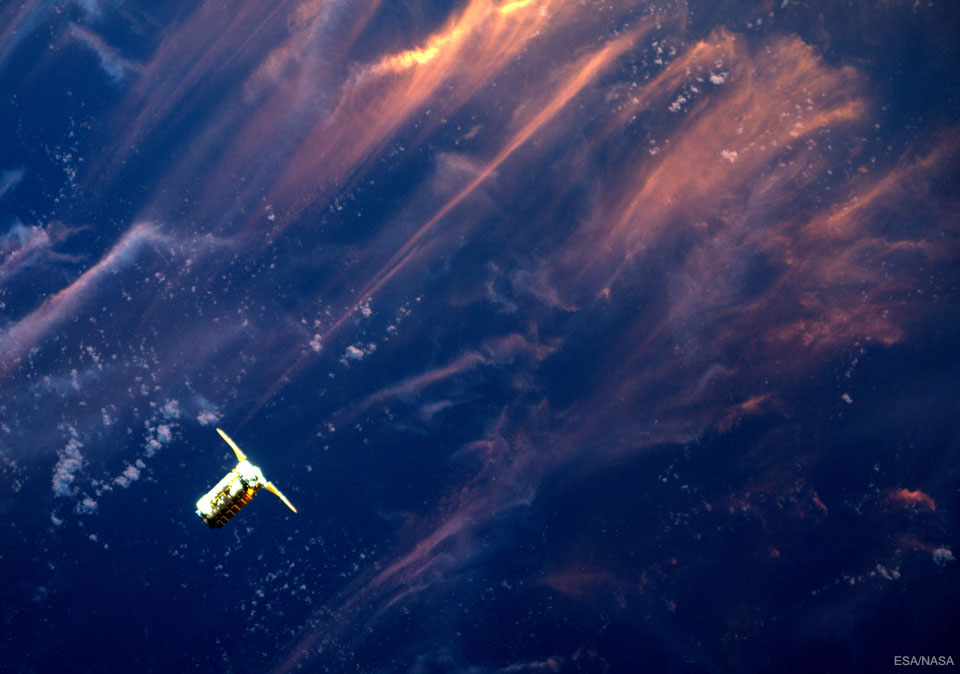
There it is! The Cygnus supply ship was a welcome sight to the astronauts on the International Space Station just over a week ago. Launched three days before on a United Launch Alliance Atlas V from Cape Canaveral, Florida, the Orbital ATK's Cygnus spacecraft approached the International Space Station above the backdrop of a picturesque planet Earth. The Sun was setting off the image to the upper left, illuminating clouds well below the approaching vehicle. The robotic Cygnus spacecraft was captured first on camera and later with the space station's Canadarm2 by ESA's Flight Engineer Thomas Pesquet and NASA's Expedition-51 Commander Peggy Whitson. Commander Whitson, a biochemist, has now set a new American record for the most total days in space. Besides essentials, the Cygnus carried equipment to bolster over 200 science experiments being conducted on the football-field sized Earth-orbiting outpost. via NASA http://ift.tt/2oZrHKD
Clouds ‘Roll’ Over Pacific Atolls

Areas near the equator are frequently cloudy, obscuring the view of Earth’s surface from space. April 7, 2017, was no different. On that day, the Moderate Resolution Imaging Spectroradiometer (MODIS) on NASA’s Terra satellite captured this natural-color image of clouds over the Gilbert Islands. via NASA http://ift.tt/2oYkeLf
Subscribe to:
Posts (Atom)